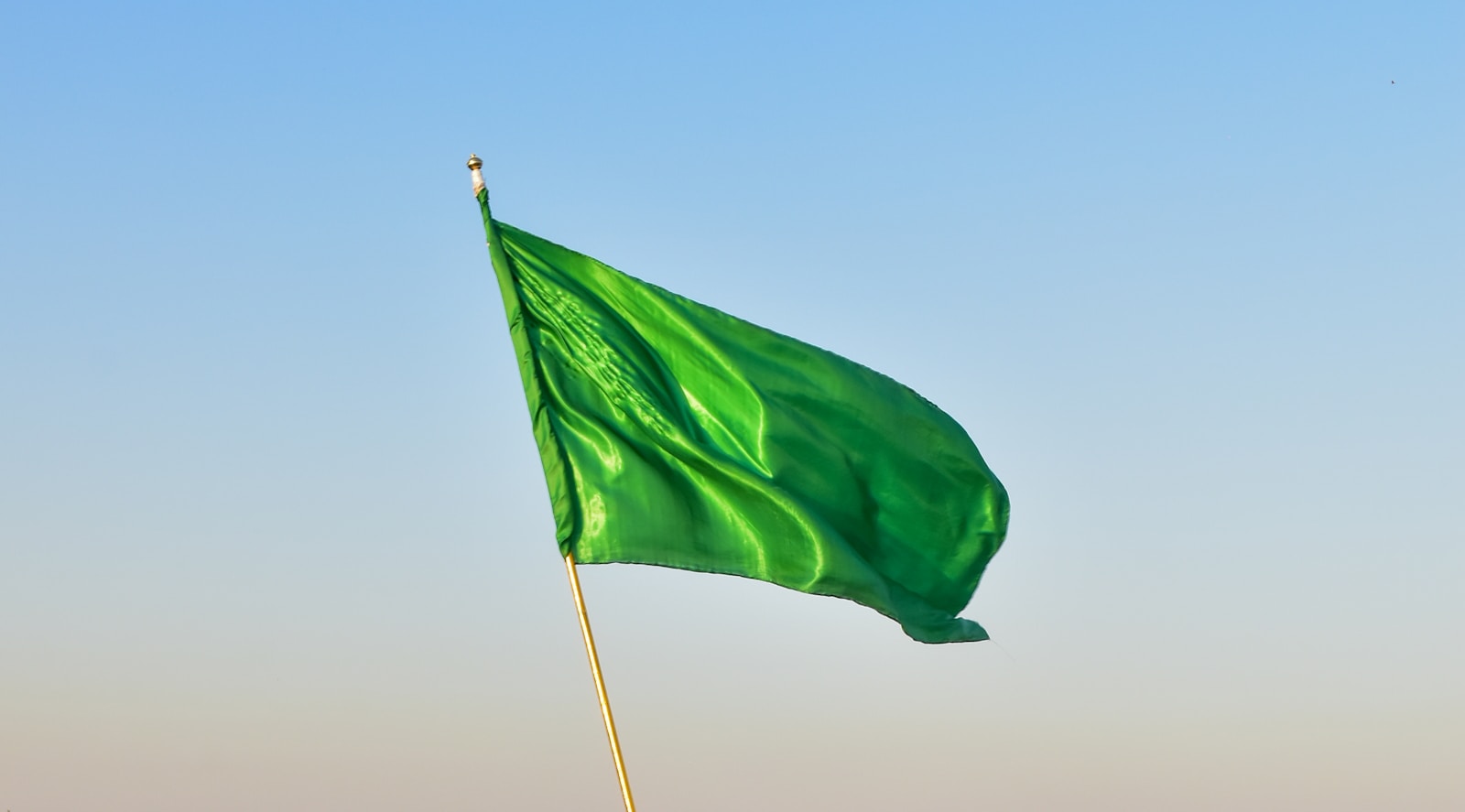When it comes to relationships—whether romantic, platonic, or familial—much of the available advice focuses on identifying warning signs or “red flags.” While being aware of potential risks is essential, it’s just as important (and often more uplifting) to recognize the positive signs of a healthy, supportive connection. These positive indicators are known as “green flags”—behaviors and traits that signal safety, respect, emotional maturity, and the potential for genuine intimacy. In this comprehensive guide, we’ll explore what green flags look like in various relationships, why they matter, and how you can cultivate them for thriving connections.
What Are Green Flags in Relationships?
Green flags are the signs that a relationship—romantic, friendship, familial, or even professional—is grounded in mutual respect, trust, and well-being. In essence, green flags show up as consistent positive behaviors that foster a secure, nurturing environment for both people involved. Recognizing these signs can help you make informed decisions about who you allow into your life, encourage healthy boundaries, and build more meaningful connections.
Green Flags vs. Red Flags
While red flags are signals of harmful dynamics—such as manipulation, dishonesty, or disrespect—green flags are the affirmations that a relationship is healthy. Rather than focusing solely on avoiding harm, looking for green flags actively guides you toward relationships that enrich your life.
- Red Flag: Lying or secrecy
- Green Flag: Open, honest communication
- Red Flag: Controlling or jealous behavior
- Green Flag: Respect for independence and personal boundaries
Top 10 Green Flags to Look For in Any Relationship
The specifics of what constitutes a green flag may vary, but there are universal indicators that apply across healthy relationships. Here are some key green flags to watch for:
-
Consistent Respect for Boundaries
Healthy relationships are founded on mutual respect—a recognition of each other’s personal space, time, and emotional needs. When someone listens and responds appropriately to your boundaries (e.g., comfort with physical touch, privacy, pace of the relationship), it’s a strong indicator of emotional intelligence.
-
Open and Honest Communication
Green-flag relationships are characterized by transparent dialogue. Both people feel comfortable expressing thoughts, concerns, and feelings without fear of retaliation or ridicule. This includes the ability to disagree respectfully and listen actively.
-
Emotional Availability and Vulnerability
When a partner or friend is willing to share their feelings and be emotionally present, it fosters a sense of intimacy and trust. This means acknowledging emotions and allowing space for mutual vulnerability.
-
Support for Growth and Independence
In a green-flag relationship, both individuals encourage each other’s interests, ambitions, and independence. Healthy connections don’t require you to shrink yourself or give up your passions—they celebrate your success and growth.
-
Accountability and Willingness to Apologize
Everyone makes mistakes. The key is whether someone can own up to them, apologize sincerely, and demonstrate commitment to personal growth. A green flag is when conflict becomes an opportunity for learning, not blame.
-
Kindness and Empathy
Consistently kind and empathetic behavior, especially during stressful moments, distinguishes safe relationships from unstable ones. Does this person show care—not just through words but through consistent actions?
-
Consistent, Reliable Behavior
Trust is built through reliability and consistency. When someone follows through on promises, keeps their word, and is dependable during good times and bad, it’s a strong green flag.
-
Healthy Conflict Resolution
All relationships encounter disagreements. What separates a green-flag relationship is the ability to navigate conflict with respect, active listening, and collaborative problem-solving rather than avoidance, stonewalling, or escalation.
-
Respect for Other Relationships
Support for your other relationships—be it with family, friends, or colleagues—is vital. Healthy partners or friends don’t demand exclusivity or isolate you from your support network.
-
Genuine Enjoyment of Each Other’s Company
At its core, a green-flag relationship adds joy to your life: shared laughter, common interests, and mutual appreciation. The relationship shouldn’t feel like a chore or emotionally draining.
Green Flags in Romantic Relationships
Romantic partnerships, in particular, benefit from clear signs of safety and respect. Identifying green flags early—especially in the dating phase—can help you invest in relationships with the most potential for happiness and security.
Examples of Romantic Green Flags
- Your partner actively listens to you, asks clarifying questions, and encourages open communication.
- They respect your decisions and support your autonomy, whether it’s about your friendships, career, or lifestyle choices.
- Both of you can talk openly about boundaries and preferences, including topics related to intimacy, finances, and future goals.
- There is a willingness to work through misunderstandings together, rather than resorting to blame or stonewalling.
- You feel safe sharing vulnerabilities without fear of mockery or shame.
- Compliments and acts of kindness are genuine and not used as manipulation or to “keep score.”
- Your partner respects your need for alone time and space.
Cultivating Green Flags in Romance
Mutual effort is key for fostering and maintaining green flags in your relationship. It can include:
- Checking in with each other regularly about needs, feelings, and boundaries
- Commitment to honest, nonjudgmental communication and feedback
- Engaging in shared activities and creating new experiences together
- Supporting each other’s goals and dreams
- Practicing empathy and patience during challenging times
Green Flags in Friendships
Friendships can be just as impactful on our well-being as romantic relationships. Green flags in friendships look like reliability, mutual respect, and authentic joy in each other’s presence.
Signs of a Healthy Friendship
- Friends celebrate your accomplishments, big or small, without envy or competition.
- They keep your confidences and respect your limits.
- Disagreements don’t threaten the relationship; instead, you work through issues with understanding and respect.
- You feel comfortable being yourself, flaws and all, without fear of judgment.
- There’s a healthy give-and-take—support goes both ways.
- Apologies are offered when someone makes a mistake.
Cultivating Green-Flag Friendships
Strong friendships are often maintained through intentional acts, such as:
- Expressing gratitude and appreciation for your friend’s presence in your life
- Making time for each other, even if life gets busy
- Offering a listening ear and emotional support in difficult times
- Respecting differences, whether in opinions, beliefs, or lifestyles
- Celebrating each other’s achievements and growth
Green Flags in Family Dynamics
While we don’t always get to choose our family, fostering and recognizing green flags within familial bonds can improve emotional safety. Green flags here involve mutual respect, understanding, and appropriate boundaries.
- Family members acknowledge and respect your individuality, even if your choices differ from their own.
- Healthy communication—disagreements are handled constructively, without resorting to insults or ridicule.
- Support and encouragement when you pursue your interests or face challenges.
- Respect for your autonomy as you grow and develop your own identity.
- Ability to apologize and make amends after conflict or misunderstandings.
Green Flags in Professional Relationships
Healthy work environments contribute significantly to overall well-being. Green flags in professional contexts help foster a culture of trust, inclusion, and productivity.
- Open, respectful communication between colleagues and supervisors
- Recognition of contributions and achievements
- Clear, fair expectations, and boundaries around work-life balance
- Willingness to collaborate and share credit for successes
- Support during setbacks or challenges
How to Spot Green Flags: Practical Tips
Recognizing green flags sometimes requires slowing down and cultivating self-awareness. Here are practical strategies for tuning in to positive relationship indicators:
-
Pay Attention to Consistency
Green flags aren’t one-off gestures. Look for patterns of supportive, respectful behavior over time. Trust is earned through reliability, not grand gestures.
-
Notice How You Feel
Check in with your emotional state after spending time with someone. Do you feel safe, understood, and valued? Or are you frequently anxious, drained, or uncertain?
-
Observe Conflict Resolution Styles
How does the other person handle disagreements? Do they listen, apologize, and actively seek solutions? Or do they deflect, blame, or become defensive?
-
Ask Questions
Courageously voice your needs and boundaries—healthy relationships will respond with empathy and understanding, not with dismissiveness or deflection.
-
Monitor Mutual Effort
A green-flag relationship involves balanced participation from both parties, whether it’s communicating, making plans, or offering support.
Why Green Flags Matter: The Impact on Mental Health
Investing in relationships marked by green flags can have a significant, positive impact on mental well-being. Here’s how healthy relationships enrich our lives:
- Provide emotional and practical support during life transitions and challenges
- Boost self-worth and self-esteem through validation and encouragement
- Buffer stress, anxiety, and depressive symptoms by creating a safe space for connection
- Encourage personal growth by modeling healthy behaviors and attitudes
- Promote a sense of belonging and community
Conversely, relationships dominated by red flags or lacking green flags can leave us feeling insecure, unworthy, and isolated. That’s why it’s so vital to seek—and be—partners and friends who bring out our best and create spaces for mutual flourishing.
Can Green Flags Develop Over Time?
Absolutely. Relationships aren’t static, and green flags can emerge as people grow in mutual understanding and self-awareness. For example, someone may not be skilled at discussing feelings initially but can develop that ability with conscious effort and support. The crucial aspect is willingness—the readiness to learn, to apologize, and to practice new skills. Authentic improvement is itself a green flag.
How to Encourage More Green Flags in Your Relationships
It’s one thing to spot green flags; it’s another to help nurture them. Whether you’re seeking them out or hoping to foster more of them in your connections, consider these strategies:
-
Practice Self-Reflection
Ask yourself: Do I model the green flags I hope to find? Developing self-awareness about your own behavior sets the stage for reciprocity.
-
Communicate Directly
Clear, open communication about your values, needs, and limits can actively encourage similar behavior from others.
-
Give Positive Feedback
When a friend, partner, or colleague demonstrates a green flag, acknowledge it. Positive reinforcement can strengthen healthy patterns.
-
Set and Respect Boundaries
Boundaries are essential for sustaining trust and respect, both your own and those of others.
-
Seek Out Growth-Oriented Environments
Surround yourself with people and communities that value openness, personal development, and kindness.
Conclusion: Choosing Relationships That Help You Thrive
Spotting red flags is crucial, but so is knowing what you’re hoping to find—a relationship grounded in empathy, respect, and growth. Green flags aren’t just signs of existing health; they’re guideposts toward the type of connections that allow us to flourish. By learning to recognize and nurture these qualities, you empower yourself to create a circle of trust, safety, and fulfillment. In every sphere of life—love, friendship, family, or work—green flags pave the way for stronger, happier, and healthier relationships.





